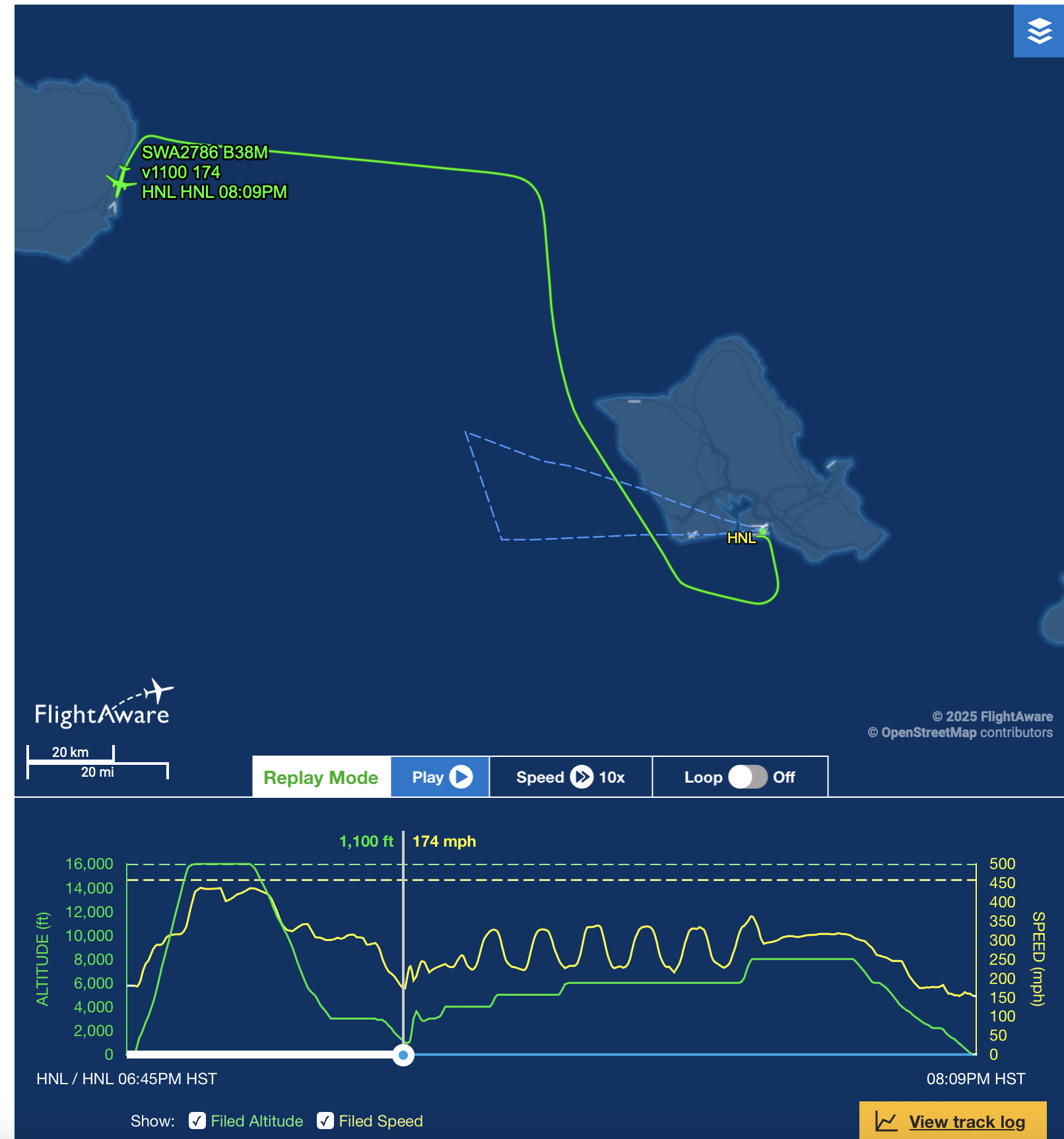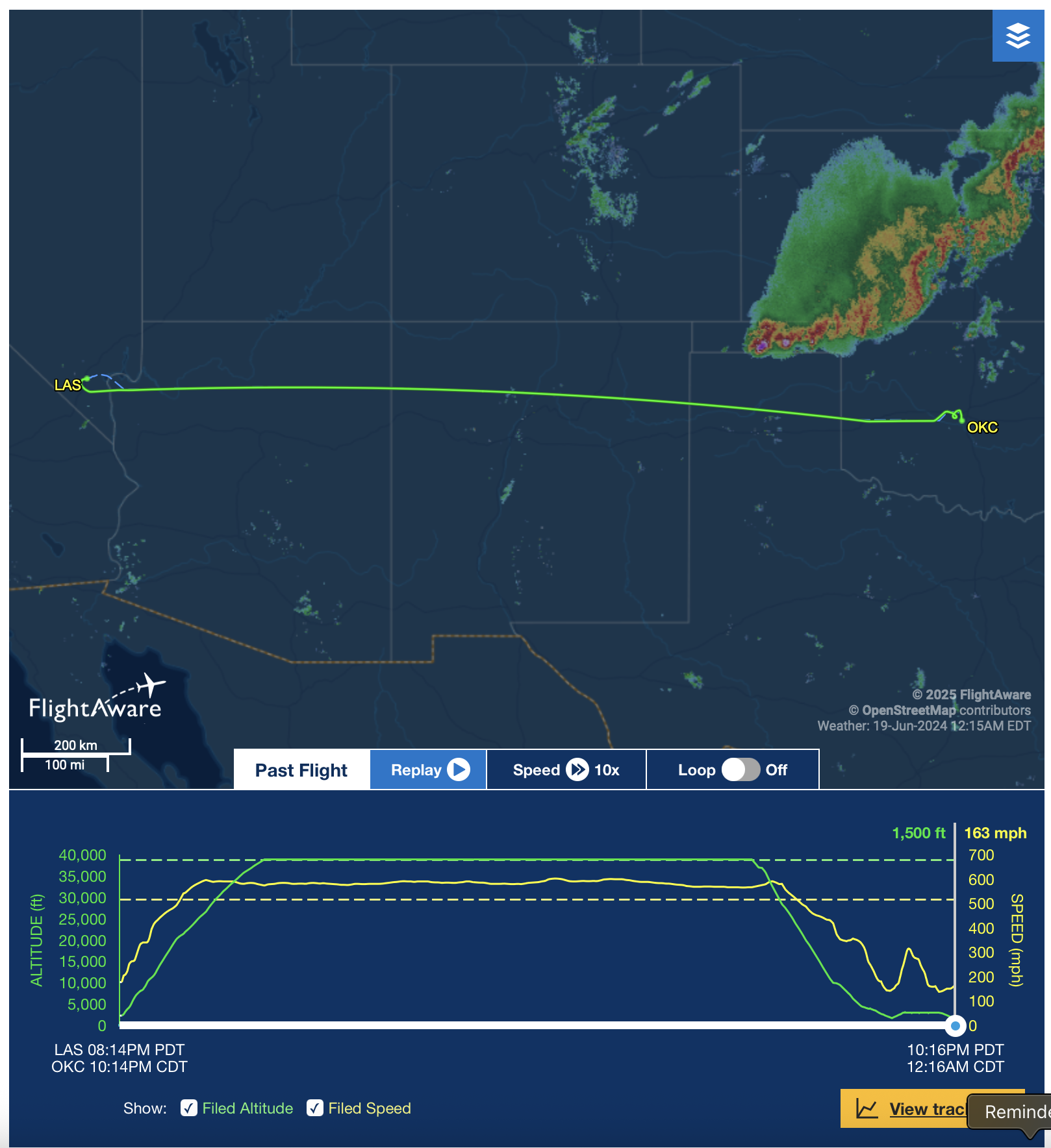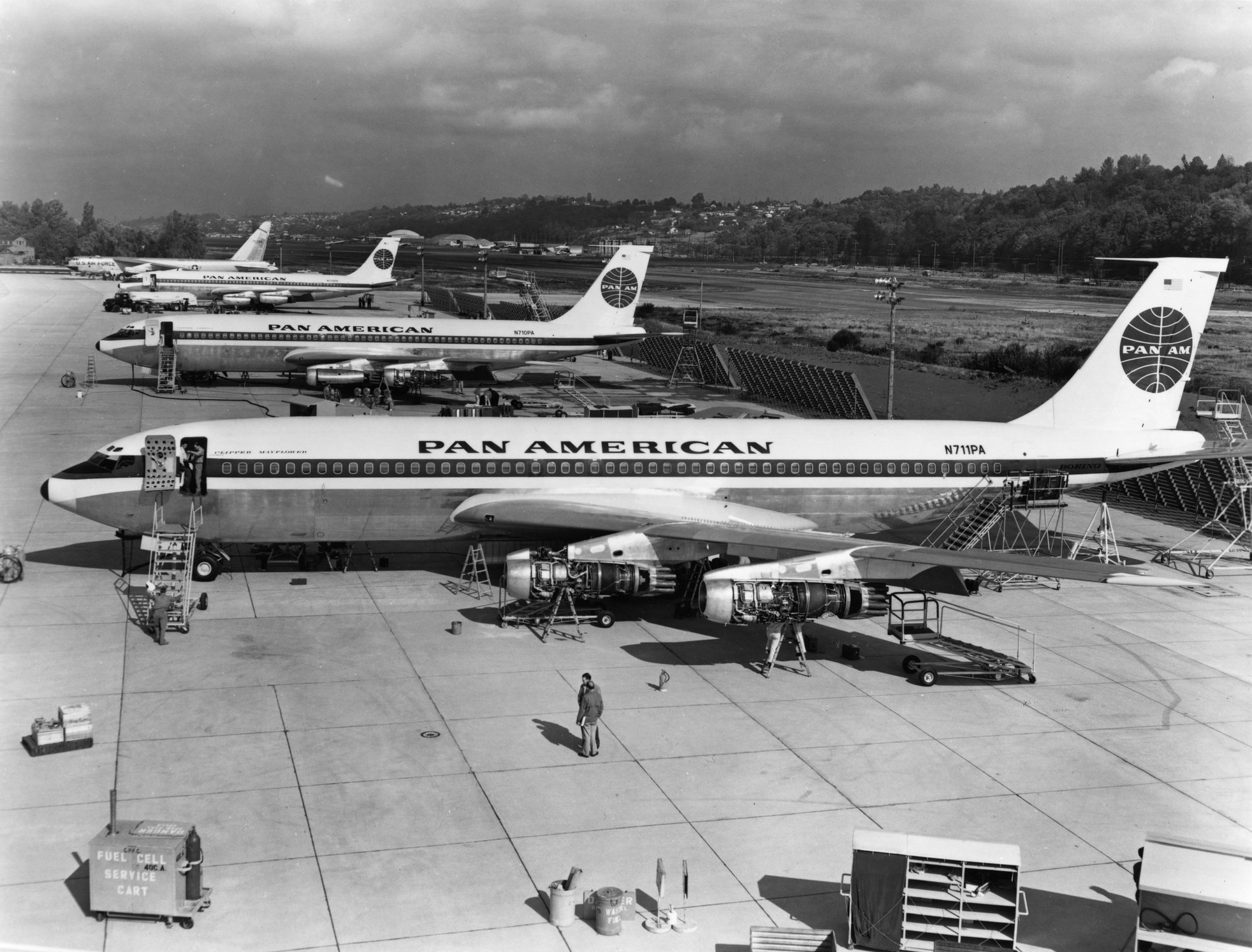The Aviation Safety Action Program (ASAP) is a voluntary safety program to encourage employees to report safety-related events and concerns without fear of punishment. It is used to identify and correct safety issues before they become accidents. In theory, it encourages pilots, mechanics, flight attendants, dispatchers, and other personnel to "self report" in an effort to promote safety. Some consider it a "get out of jail free" card. That was how it was designed. In practice, however, it seems to be a way for airlines to bypass FAA investigation. The FAA willingly abdicates its regulatory responsibility because it means less work for them.
— James Albright

Updated:
2025-06-01
I hope that most airlines are using ASAP as intended: it is a partnership between them, their unions, and the FAA. Issues are resolved through corrective action, safety is promoted, and system issues are solved. Not all airlines are doing this however. In my opinion, Southwest Airlines seems have avoided the consequences of recent incidents that could have resulted in the loss of hundreds of lives. They were lucky nobody was killed. The FAA says they are investigating and the airline says they are cooperating. And yet we, the flying public, haven't heard the results of these investigations and I suspect the FAA is content to leave this with the airline.
Those of us who follow aviation closely are left thinking the airline, for some reason, is content to do nothing. Of course that isn't true. I heard that the company is now cycling every pilot through their headquarters for what was described to me as a "Come to Jesus" meeting. Will this work? I don't know. It seems to me this measure was needed ten years ago. Let's hope the company is serious this time around.
Based on some of the pilots I know who fly for Southwest, I used to think they were the best air carrier in the U.S. Based on what I've learned in the last year, I don't think I'll ever fly them again.
Note that much of what follows is my opinion only. I rarely stray away from firm facts that I can back up with accident reports or NTSB dockets. But in this case, there is so little published and the ADS-B data and tower tapes are so alarming, that something needs to be said. Of the four examples given, nearly a thousand lives came very close to being lost. More than a thousand if you consider possible ground casualties.
1 — ASAP - As it was meant to be
2 — ASAP - Where it has gone wrong
3 — Example: Southwest Airlines Flight 147, March 23, 2024, "The tower fly-by"
4 — Example: Southwest Airlines Flight 2786, April 11, 2024, "The Pacific plunge"
5 — Example: Southwest Airlines Flight 4069, June 19, 2024, "You good out there?"
6 — Example: Southwest Airlines Flight 425, July 14, 2024, "I Follow Roads"

1
ASAP
As it was meant to be
The objective of an ASAP is to encourage employees of air carriers, repair stations, or other entities (collectively referred to as “eligible entities”) to voluntarily report safety information that may be critical to identifying potential precursors to accidents. The Federal Aviation Administration (FAA) has determined that identifying these precursors is essential to further reducing the already low accident rate. The establishment of an ASAP is available to any eligible entity that has the resources and ability to effectively implement and operate an ASAP and is contingent upon the FAA’s capacity to effectively manage such an entity’s program.
AC 120-66C, ¶1
The FAA has granted the airlines broad discretion in ASAP:
1. The event review committee (ERC) has discretion in considering the timeliness of reporting.
2. The ERC has discretion to create its own policy and procedures manuals.
6. FAA attendance at an ERC meeting is optional, depending of what types of reports are being considered by the ERC in the meeting.
AC 120-66C, ¶7
An ERC is a group comprised of a representative, and alternate, if possible, from each party to an ASAP. The ERC is comprised of a management representative from the eligible entity, a representative from the employee group or employee labor association (if applicable), and a specifically qualified FAA inspector from the appropriate Flight Standards office.
AC 120-66C, ¶13
Section 18 of AC 120-66C lists exclusions to ASAP, such as reports that are not timely, incidents of reckless or intentional conduct, and incidents involving criminal activity, substance abuse, controlled substances, alcohol, or intentional falsification.
2
ASAP
Where it has gone wrong
Corrective Action for Systemic Issues. For corrective action regarding systemic issues by an eligible entity:
- The ASAP manager should provide such ERC recommendations to the appropriate company department head for consideration.
- The eligible entity may implement, modify, or decline to implement the ERC’s recommendations.
- The ASAP manager records, tracks, and follows up on the company’s response and action.
- The ASAP manager should record all recommended actions in the ASAP database.
- The ASAP manager should bring systemic issues to the attention of company and FAA management.
Source: AC 120-66C, ¶13
Note that the ASAP manager should being systemic issues to the attention of the airline and the FAA, but is not required to.
In my opinion . . .
I believe the FAA is using ASAP to absolve themselves of their responsibilities to regulate civil aviation safety and investigate aviation accidents and incidents. This type of "self-policing," or allow the fox to guard the hen house, is somewhat like the FAA's Organization Designation Authorization (ODA) program, which allows aircraft manufacturers to perform certain certification tasks. ODA, you may recall, gave us the Boeing 737 MAX debacle. I believe ASAP is allowing Southwest Airlines to repeatedly come very close to killing hundreds of people at a time, without repercussions.
How about some examples?
3
Example: Southwest Airlines Flight 147, March 23, 2024
"The tower fly-by"
The weather at LaGuardia was solid IFR, but airplanes were getting in.
KLGA 231651Z 04016KT 1 SM R04/400VP600FT +RA BR OVC006 08/06 A2979
On their first approach, the crew of Southwest Airlines Flight 147 went around, appropriately so.
“Southwest 147, when you get a chance, just let me know the reason.”
“We were too fast, too high with the tailwind, Southwest 147.”
On their second approach, the airplane in front of them went around, saying, "it looks like we got some windshear." Southwest 147 may have experienced some of that, but it doesn't explain why the airplane ended up 1,400 right of centerline indicating 100 feet. It took a sharp tower controller to save the day:
“Go around! Go around! Fly runway heading, climb and maintain 2,000. Climb and maintain 2000! 2000!”
The crew responded, almost casually, and ended up diverting.
This was over a year ago. While the FAA said they would investigate, no results have been made public. How do we know any of this?
Blancolirio: SWA 147 LGA 23 March Nearly Hits Control Tower!
VAS Aviation: NEAR COLLSION with Control Tower! Plane Deviates from Landing Path
In my opinion . . .
The flight path of the airplane led them to one of the airline terminals and the death toll could have been in the hundreds had the tower controller not acted as quickly as she did. I think any crew that allows an approach to go this far wrong must be (a) incompetent, (b) asleep, or (c) unserious about what they are doing. I think any airline that tolerates this is criminally negligent. I also think someone at the FAA needs to be fired for allowing this to slip under the radar. The Southwest Airlines ASAP Memorandum of Understanding should be revoked.
4
Example: Southwest Airlines Flight 2786, April 11, 2024
"The Pacific plunge"
It was a routine flight from Honolulu, Hawaii, on the island of Oahu, to Lihue, Hawaii, on the island of Kauai. The news reports were alarming, but quickly forgotten.
A memo distributed by Southwest to its pilots last week, obtained by Bloomberg News, revealed that the aircraft came within 400 feet of the ocean's surface. The jet reportedly plunged at a rate exceeding 4,000 feet per minute before the pilots successfully pulled up, averting a potential disaster. No passengers or crew members were reported injured during the ordeal.
Southwest Airlines addressed the incident in a statement to Newsweek on Saturday via email, emphasizing its commitment to safety. "Nothing is more important to Southwest than safety. Through our robust Safety Management System, the event was addressed appropriately as we always strive for continuous improvement," the airline said.
The FAA, in collaboration with Boeing and the National Transportation Safety Board (NTSB), is probing the incident. Southwest, meanwhile, has pledged its cooperation with the investigation.
Source: Newsweek
According to Bloomberg, which first reported the incident, a “newer” first officer was at the controls when the Boeing 737 Max 8 unexpectedly plummeted, leaving the plane just 400 feet from crashing into the ocean. Flight tracking data from ADS-B Exchange paints a chilling picture, with the plane dropping at a rate of more than 4,000 feet per minute while only 600 feet above sea level.
As the investigation into Southwest Flight 2786 unfolds, the aviation community will undoubtedly scrutinize the airline’s training programs, crew resource management protocols, and the overall safety culture within the organization. The incident also underscores the importance of ongoing efforts to enhance aviation safety through technological advancements, data analysis, and a collaborative approach involving airlines, regulators, and industry experts.
Source: Medium
This was also over a year ago and the press is no longer interested. The NTSB, contrary to the reporting, is not investigating. The FAA hasn't released any news of their investigation. If there is any extra scrutiny going on, it has been well hidden. Unless you happen to catch it on the local news or on YouTube, you would have never heard about it:
Southwest plane came within 400 feet of the ocean near Hawaii as it descended
In my opinion . . .
This incident is worthy of an NTSB investigation and Congressional insight, but none of that is happening. The FAA can say the airline's ASAP program is handling it. The airline can say ASAP has identified the problem, two pilots, and has addressed the problem with additional training. Nobody seems to be interested in how the pilots were trained in the first place.
5
Example: Southwest Airlines Flight 4069, June 19, 2024
"You good out there?"
The Southwest crew was heading for Will Rogers World Airport on a routine flight, and ended up just 525 feet above Yukon, Oklahoma, over 9 miles from the runway, triggering a Minimum Safe Altitude Warning from Air Traffic Control. The Controller contacted the crew:
“Southwest 4069, low altitude alert. You good out there?” The pilot replied, “Yeah, we’re going around.”
Following the incident, the FAA said in a statement: “After an automated warning sounded, an air-traffic controller alerted the crew of Southwest Airlines Flight 4069 that the aircraft had descended to a low altitude nine miles away from Will Rogers World Airport in Oklahoma City.”
It added that it was investigating the incident.
In a statement reported by the Associated Press, Southwest Airlines said: “Southwest is following its robust safety management system and is in contact with the Federal Aviation Administration to understand and address any irregularities with the aircraft’s approach to the airport. “Nothing is more important to Southwest than the safety of our customers and employees,” the airline added.
Source: The Guardian
I'm not so sure about that last statement. From one of their pilots:
While attending indoctrination at Southwest Airline, Randy Smith (SW management) posed a question to the attendees; his question was “what is the most important contribution a pilot can make as an employee at SW?” A fellow pilot raised his hand and quickly replied “safety.” Randy Smith paused and said “good answer, but that isn’t the best answer.” The whole room seemed to tense up. Randy Smith then posed another question; “how important is safety, if an airline goes out of business?” Randy Smith went on to say that the greatest contribution a pilot can make as a pilot at SW, is to operate the airplanes in a financially efficient manner. That was the moment I realized that profit was always going to be more important than safety at SW because safety, doesn’t assure you can stay in business, and remaining in business is more important than anything to Southwest management, as that is the only way they get paid.
Source: Flight to Success
When company leadership has the mindset that safety comes behind profit, and openly say that to a class of new hire pilots, the message has to have an impact. I can't think of a sane explanation for this incident, except maybe one. I would never had heard about it except for this:
Blancolirio: Low Altitude Alert! WN4069 KOKC 19 June 2024
In my opinion . . .
Pilots get tired, it is part of the job. A professional pilot knows when to call in and say he or she is too tired to fly. Was this a factor? We don't know. Was alcohol involved? We don't know. Was there some kind of mechanical excuse? We don't know. I presume the details are locked away in an ASAP report that the FAA trusts Southwest will use to prevent this from happening again. We don't know, but in less than a month, it happened again . . .
6
Example: Southwest Airlines Flight 425, July 14, 2024
"I Follow Roads"
A Southwest Airlines passenger believed she was about to die when she witnessed her flight flying dangerously close to Old Tampa Bay waters, miles from the airport.
Nancy Allen was aboard Southwest Flight 425 from Columbus, Ohio, to Tampa, Florida, on July 14 when the plane dropped to below 200 feet over the water near the Courtney Campbell Causeway.
“I think the thing that I first saw that really concerned me was how close to the water we were. I didn’t know at the time that we were flying necessarily east, but I knew that Tampa Bay was way too close to us, and that was my big red flag,” Allen told WTVT.
At its lowest point, the Boeing 737 Max 8 was only 150 feet over the water, and still 4 miles from its destination.
Flights over the region typically are around 1,225 feet, according to flight-tracking service Flightradar24.
The FAA announced it is investigating the low-altitude incident, along with two others involving Southwest flights from earlier this year.
Source: NY Post
Looking at the ADS-B flight track, it appears the aircraft was lined up on the Tampa Bay bridge. The aircraft was in visual conditions but there was weather between them and the airport. Could they have been trying to navigate by reference to the ground and mistook the bridge for the runway? Don't know. About all we know:
Blancolirio: SWA 245 KTPA 14 July TOO LOW!
VAS Aviation: Southwest DANGEROUSLY LOW! Extreme Weather Approach at Tampa
In my opinion . . .
This is a two pilot crew and neither pilot could be bothered to keep an eye on the other. Are there no Pilots Monitoring in some Southwest Airlines crews? The Tampa Bay bridge, like most bridges this length, has a maximum height in the middle. This bridge has a maximum height of 180 feet. The airplane got down to 150 feet. Why are these pilots still employed?
7
A report from the inside
As alarming as these examples are, they are just the ones we've heard about because local news stations knew about them and reported. What incidents failed to make that kind of news? An insider pilot at Southwest Airlines tells me one of their pilots stalled the airplane at 3,000 feet after departing Chicago Midway Airport, taking 1,000 feet to recover. Yes, this also happened in the last year.
Another insider in the Southwest Airlines training department tells me that while Standard Operating Procedures are taught, it is up to the captains whether or not to follow them. This is borne out by these incidents and many others before them. The same insider tells me that captains are granted great latitude, so long as they keep the airplanes flying, sometimes ignoring the Minimum Equipment List, and keeping diverts to a minimum, ignoring stable approach rules.
I am also told that the old timer network in the training center and parts of management have held onto power and refuse to allow changes that aren't forced on them. The entire company worships at the feet of the "ancients," and as the ancients die off, they train a new generation of ancients. The system regenerates in the image of the old.
In my opinion . . .
I've seen this culture in one of my Air Force wings, the 89th Airlift Wing at Andrews Air Force Base, circa 1990. Congress and the White House bestowed upon the 89th the duty to fly the nation's leadership around the world. The Air Force entrusted the Military Airlift Command to pick from their finest to do that. As the "finest" became enshrined, they started to beat up on the next generation as never good enough. After the first generation retired, the second generation took over and, now that they finally had a chance, shaped everything as they saw fit, with an iron hand. So too it is with the "Airline that Herb built." They used to have very high standards when it came to pilots, but with a growing fleet of airplanes and a decreasing supply of very good pilots, something had to give. Now those less than "finest" pilots are in charge, standards have fallen. (Or aren't used at all.)
8
The Pan American World Airways parallel
"Skygods"
When I first read about Southwest Airlines Flight 1455, which was slam dunked into Burbank, I thought it impossible. How could pilots of the caliber I was certain filled the Southwest ranks, have possibly allowed this to happen? It must be a "one off" event. Then, five years later, Southwest Airlines Flight 1248 proved it wasn't an isolated case. But things improved and all appeared right with the airline. That is, until 2013, when Southwest Airlines Flight 345 showed that inept captains continued to fill the airline's cockpits.
At first I thought it was a problem with their captains, but it was more than that. Then I thought it was unstable approaches, but it was more than that. Then CRM. But finally I decided it was a defective pilot culture. Each of the incidents I've detailed on this page points to a pair of pilots in the same cockpit who have a problem. How is this possible in this day and age?
There is a parallel in history, and that is with Pan American World Airways back in the glory days. The captain was king and was known as a "Master of Ocean Flying Boats." The older generations of these pilots, and those who populated the airline's top management, were known as "Skygods."
Pan Am had crashed more Boeing jets than any other carrier in the word. [ . . . ] Something had to be done. Before the smoke subsided from the burning wreckage on Mount Partas in Bali, the probe of Pan American's flight operations had begun.
Inspectors from the Federal Aviation Administration climbed aboard Pan Am Clippers all over the world. FAA men rode in cockpits, pored through maintenance records, asked questions, observed check rides and training flights.
[ . . . ]
The report was scathing. Pan Am's accidents in the Pacific, declared the FAA, involved "substandard airmen." Training was inadequate, and there was a lack of standardization among crews.
[ . . . ]
The indictment landed in Skygod country like a canister of tear gas.
Substandard airmen? Wait a minute, you bureaucratic piss ants . . . this is Pan American, the world's most experienced airline . . . we were the first to fly jets, the first to . . .
That was then, said the Feds. This is now. Clean up your act, or you will be the world's most grounded airline.
Source: Gandt, pp. 115 - 116
I believe the cited book, by the way, is the best treatise on CRM ever written. Here's my review: Skygods Book Review.
In my opinion . . .
In my opinion, Southwest Airlines is the new Pan American World Airways. In their minds, they are the model to emulate and nobody can convince them otherwise. And like Pan Am before them, they are suffering from a cancer of culture. A cancer that requires drastic medicine.
9
What needs to happen
In my opinion . . .
I believe the cure for Pan Am's cancer should work for Southwest. Every pilot in senior management needs to go. Any pilots with spotty records also need to go. The entire operational side of the airline needs an audit from someone who knows how to run a safe airline. That includes the entire training and checking organizations. But that isn't the only problem.
I believe the Aviation Safety Action Program is fundamentally flawed: you cannot allow the airline to police itself.
Finally, I believe the head of the Federal Aviation Administration, "The Administrator," sets the tone and should be immune to airline politicking. (Southwest donated over a million dollars to both parties last year.) The Administrator should be prevented from going to private industry for at least 10 years, ending the so-called "revolving door" with those they regulate. Michael Huerta (Administrator, 2013 - 2018), for example, is now on the board of directors at Delta Airlines.
References
(Source material)
Advisory Circular AC 120-66C, Aviation Safety Action Program, 3/31/20, Federal Aviation Administration
Aviation Safety Action Program (ASAP) at Southwest Airlines, Aircraft Mechanics Fraternal Association (AMFA) National, 29 September 2020
Boeing MAX Plane's Near Disaster Sparks New Federal Probe, Newsweek, June 15, 2024
Criminal Intent and the ASAP System!, Flight To Success blog spot, comment, October 1, 2024
FAA investigating after Southwest plane flies 525ft above Oklahoma town, 21 Jun 2024
Gandt, Robert, Skygods: The Fall of Pan Am, Wm. Morrow Company, New York, 1995




